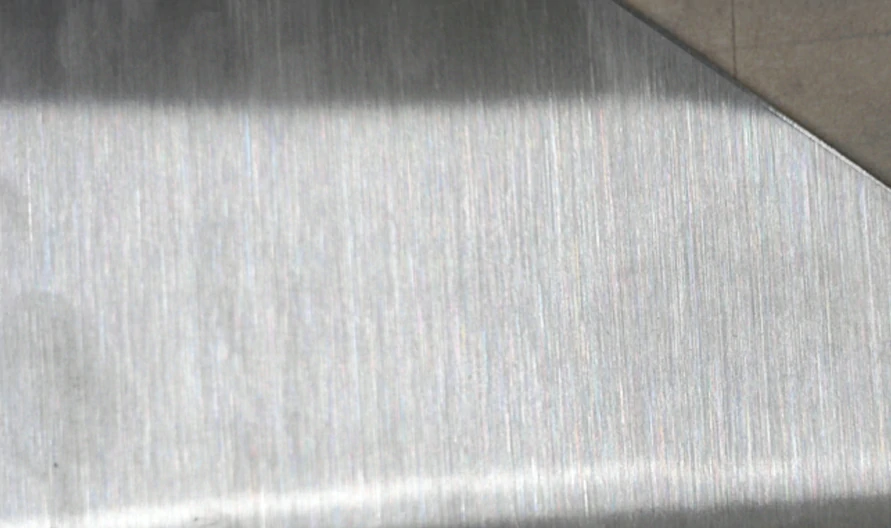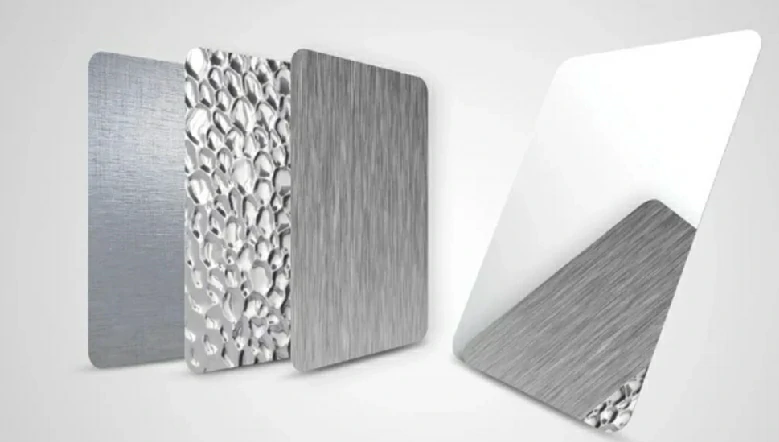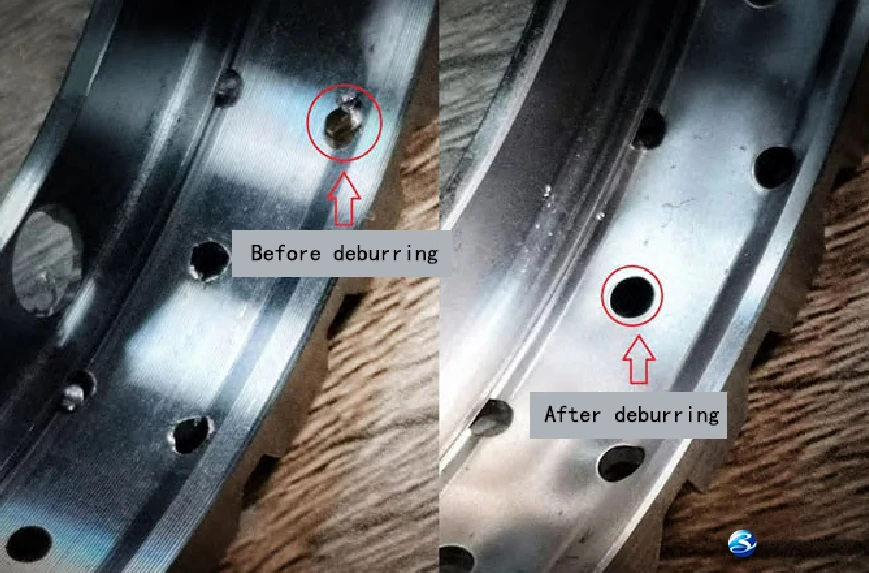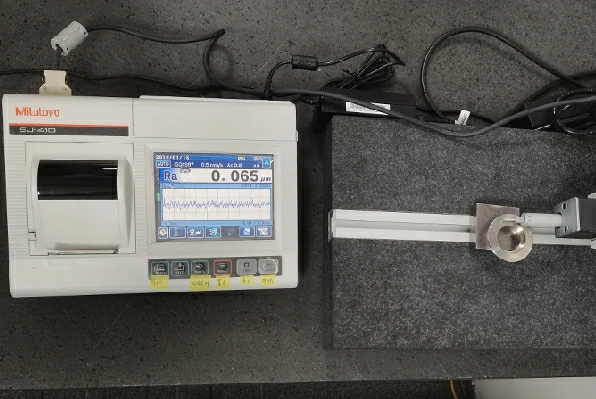Brushed is the most commonly used process for aluminum alloys before anodizing. It can endow metal products with unique texture and aesthetics. This article will provide a detailed introduction to the principle, application, and development of brushed aluminum technology.
What is brushed aluminum?

Brushed aluminum is a type of surface finishing created through a specific process to give it a visual effect similar to sandblasting or brushing.
To achieve this effect, manufacturers use abrasives such as grinding sand or emery to grind the metal surface, creating a brushed surface with different textures. Depending on the method of processing, the brushing process can be divided into mechanical brushing and chemical brushing.
Mechanical brushing: Mechanical brushing mainly utilizes the friction between the grinding sand and the aluminum material. By continuously changing the particle size and pressure of the abrasive, the desired texture is gradually ground onto the aluminum surface.
Chemical brushing: Chemical brushing involves coating the aluminum surface with a layer of chemical solution. Through chemical reactions and corrosion, a thin film forms on the aluminum surface, achieving the brushing effect.
What are the benefits of brushed aluminum?
Brushed aluminum can significantly eliminate defects such as scratches, scuffs, and machining marks on the surface of aluminum profiles, making the surface smoother and more delicate. The deeper the brushing, the stronger its ability to eliminate surface defects. This surface finishing method effectively enhances the overall appearance quality of aluminum materials, making them more attractive.
The brushed aluminum surface presents a unique texture and gloss, giving the aluminum a more upscale and textured appearance. By adjusting the parameters and processes of the brushing treatment, different textures and patterns can be created to meet customers’ personalized requirements. This is also a commonly used treatment method.
The aluminum grades used for brushed
There are numerous aluminum grades used for brushing, each with its unique characteristics and applications. When selecting aluminum sheets, it is necessary to consider their thickness. Typically, aluminum sheets ranging from 0.3mm to 4.0mm can undergo brushing treatment. The main types include:
1××× series pure aluminum
The 1××× series pure aluminum sheets are the series with the highest aluminum content, with purity reaching over 99.00%. Due to the absence of other alloying elements, their production process is relatively simple, and they are comparatively inexpensive. These aluminum sheets have good corrosion resistance and formability, commonly used in the food and chemical industries.
2××× series alloy aluminum
Represented by 2A16 (LY16) and 2A06 (LY6), the 2××× series alloy aluminum sheets are characterized by higher hardness. This series has the highest copper content, approximately around 3-5%. It is often used in the aerospace industry.
3××× series alloy aluminum
The 3××× series alloy aluminum sheets, mainly including 3003, 3004, and 3A21 aluminum sheets, have manganese as the main component, with content ranging from 1.0% to 1.5%. These aluminum sheets exhibit good rust resistance and are commonly used in humid environments.
4××× series alloy aluminum
Represented by 4A01, the 4××× series alloy aluminum sheets have a higher silicon content. The silicon content usually ranges from 4.5% to 6.0%. These aluminum sheets are commonly used in construction materials, mechanical parts, and welding materials.
5××× series alloy aluminum
The 5××× series alloy aluminum sheets have magnesium as the main element, with magnesium content ranging from 3% to 5%. This series includes multiple grades such as 5052, 5005, 5083, and 5A05. These aluminum sheets feature low density, high tensile strength, and high elongation, commonly used in the aerospace field, such as aircraft fuel tanks. Particularly for brushing treatment, the 5××× series alloy aluminum sheets exhibit excellent performance.
6××× series alloy aluminum
Represented by 6061 and 6063 aluminum sheets, the 6××× series alloy aluminum sheets mainly contain magnesium and silicon. This series combines the advantages of the 4××× series and the 5××× series, with good corrosion resistance and oxidation resistance. 6061 aluminum sheet is a cold-treated aluminum forging product suitable for applications requiring high strength and excellent interface properties. It is easy to coat and process, commonly used in the manufacture of low-pressure weapons and aircraft joints.
7××× series alloy aluminum
Represented by 7075, the 7××× series alloy aluminum sheets mainly contain zinc. This series belongs to the aerospace aluminum series, characterized by super-hard aluminum alloys and good wear resistance. 7075 aluminum sheet, after stress relief treatment, will not deform or warp after processing. Therefore, it is often used in manufacturing high-strength requirements such as aircraft.
8××× series alloy aluminum
The 8××× series alloy aluminum sheets are generally not used as brushed aluminum sheets.Because of its specific alloy composition and performance characteristics, it is more suitable for other application fields.
Related: What is 8020 Aluminum? T-slotted Aluminum Extrusion
What Is brushed aluminum used for?
Brushed aluminum, with its unique metallic quality, has found indispensable applications in various fields including construction, home appliances, transportation, and electronics.
Notably, brushed aluminum plays a significant role in commercial signage production. Its distinctive visual effect and weather resistance make commercial signage more eye-catching and durable. Whether for outdoor billboards or indoor signage, the use of brushed aluminum materials enhances brand image, attracting more attention.
What should I pay attention to brushed aluminum?
When dealing with brushed aluminum, there are several considerations to keep in mind.
Due to the susceptibility of brushed aluminum alloys to scratching post-brushing, it’s advisable to cushion layers of products with cotton paper to prevent scratching during product circulation. This is because the surface of brushed aluminum alloys is highly sensitive, and even slight friction or impact can result in scratches. Even if the transportation process is brief, it’s essential to remain cautious at all times.
Additionally, manufacturers should cover aluminum coils with a protective film during processing steps such as coiling, cutting, or slitting. This film not only prevents surface scratches and marks caused by friction during transportation and handling but also provides some degree of oxidation protection.
Difference between standard aluminum, brushed aluminum, and reflective aluminum

Standard aluminum
Standard aluminum usually refers to aluminum materials that have not undergone special treatment and have basic properties of aluminum, such as lightweight, corrosion resistance, good conductivity, etc.
Brushed aluminum
According to customer needs, the surface of aluminum presents unique textures and lines, with a delicate touch and a unique visual effect.
Reflective aluminum
After polishing, rolling and other processes, aluminum plates have a mirror effect, with a smooth and smooth surface and high glossiness. It can present excellent mirror effects without the disadvantages of being fragile or difficult to clean mirrors.
Table 1: Standard vs Brushed vs Reflective
| Property | Standard aluminum | Brushed aluminum | Reflective aluminum |
|---|---|---|---|
| Appearance | Smooth surface | Brushed texture | Highly reflective surface |
| Surface Finish | Typically untreated | Brushed finish | Polished finish |
| Application | Construction,transportation,packaging | Commercial signage,electronics,appliances | Traffic signs,license plates,decorative purposes |
| Scratching | Moderate susceptibility | Highly susceptible | Moderate susceptibility |
| Weatherability | Moderate | Moderate | Good |
| Cost | Lower | Moderate | Higher |
How to clean brushed aluminum?
Use a soft cloth or sponge to clean the surface of the aluminum material, remove dust and dirt, and avoid using cleaning agents or hard brushes containing granular objects to avoid scratching the surface. For regular cleaning, a mixture of warm water and neutral detergent can be used to clean the surface. If there is oil or severe stains on the surface, detergent or stain remover can be used for cleaning. Then use a dry soft cloth or tissue to wipe the surface, ensuring that it is completely dry and free from water stains.
Conclusion
Overall, brushed aluminum has become an effective means to improve product quality and aesthetics due to its unique appearance and wide range of applications. With the advancement of technology and the improvement of processes, the use of brushed aluminum will continue to expand, bringing innovation and value to more fields.
FAQ
To make brushed aluminum shine, you can use a few different methods. One common approach is to apply a metal polish specifically designed for aluminum surfaces. This polish can help remove any oxidation or tarnish, restoring the shine to the brushed aluminum. Alternatively, you can use a combination of water and mild detergent to clean the surface, followed by buffing with a soft cloth or polishing pad. For more stubborn stains or dullness, you may need to use a fine steel wool or sandpaper to gently buff the surface in the direction of the brush lines.
Brushed aluminum has a textured surface created through a mechanical brushing process, giving it a distinctive appearance with visible lines, while standard aluminum typically has a smooth and matte finish.
Brushed aluminum and stainless steel may look similar due to their brushed texture, but they’re different materials. Brushed aluminum is made of aluminum alloy, while stainless steel is primarily iron with chromium and other elements.
Related: When is Passivation of Stainless Steel Required? Detailed Guide
Tagged: Surface Finishing Guide



